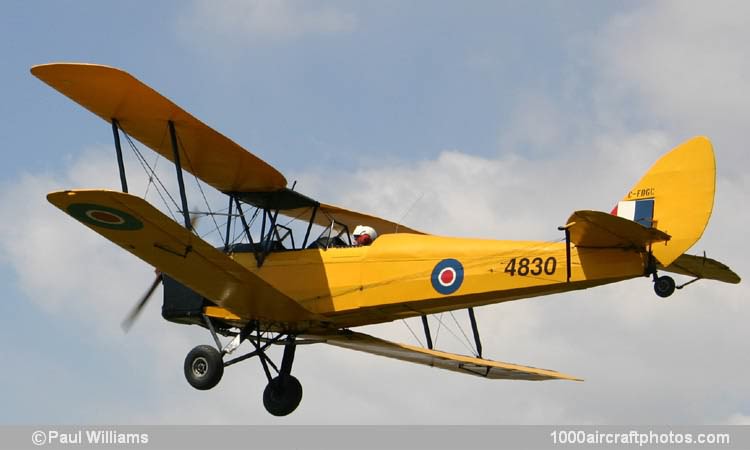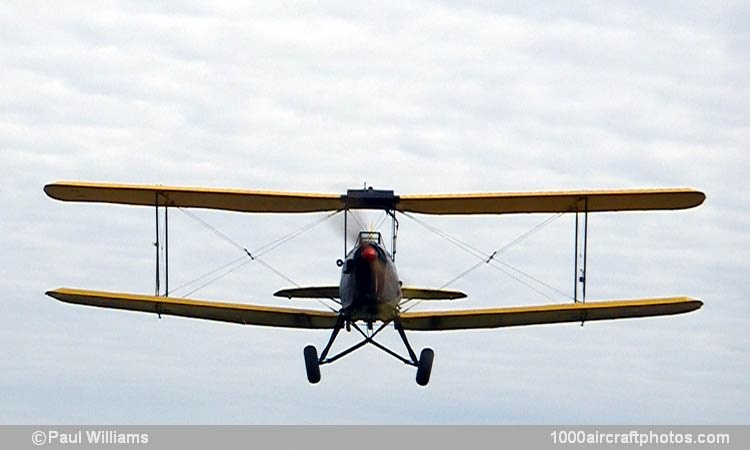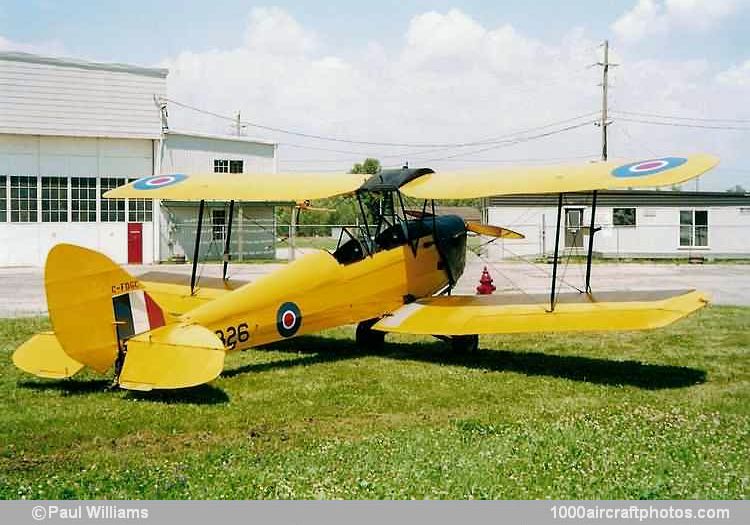04/30/2009. Remarks by
Jock Williams: "I first bought this aircraft in 1969 and have flown it ever since. I have made some movies and TV commercials with it, and it has appeared in some television productions as well. My sons Paul and Nick launched their flying days at age four with me in this aircraft back then. the boys now own two Nieuport 17 7/8 scale replicas in the colors of the Lafayette Escadrille which we will be flying them this summer as well as the Moth and our Cessna 150."
08/31/2006. Remarks by Bill Walker: "This aircraft was built by the de Havilland Aircraft of Canada for the RCAF, as a Menasco Moth Mk.II and serialed 4830 it was used as a wireless trainer at No. 8 Service Flying Training School.
The Menasco engine was used because of shortages in the UK supplied engines. Since it was then discovered that the Menasco was available with a large alternator, this permitted the installation of a UK supplied T.1083 transmitter and R.1082 receiver, plus associated indicators and antennas necessary to use the aircraft as a wireless trainer. The principal components were all contained in a large frame that replaced the rear instrument panel. The complete package extended to nearly the top of the canopy, and eliminated the view forward for the rear seat occupant. These aircraft also had a small DF loop inside a transparent tear drop shaped plastic fairing under the rear seat, and a small fairing just behind that for a hand cranked trailing lead antenna.
At all the British Commonwealth Air Training Plan (BCATP) wireless schools, the flying portion was performed at the end of several months of classroom work. The student was given a list of radio contacts to be made, including transmitting, receiving, and bearing finding. All would have to be verified by the ground stations or the staff pilot in the front seat. If a student was good, and lucky, this could be accomplished in 2 or 3 flights. If the weather and the radios were bad, and the student challenged, it could take two dozen or more flights. The staff pilots were all civilian contractors or fresh graduates of BCATP flying schools, and many would rather have been anywhere else.
Performance with all this gear was marginal, and the wireless trainer Moths in western Canada couldn't be used at all on hot summer afternoons. As higher powered Fleet Forts became available, some of the Mk.IIs were converted to straight Mk.I dual control trainers. This aicraft was converted to a regular Tiger Moth after the war and registered CF-DGC. It has been owned by the Williams family since 1969 and is based at Dunnsville, Ontario, Canada, and still flown regularly, reregistered as C-FDGC, initially wearing the RCAF s/n 7326, presently 4830."



